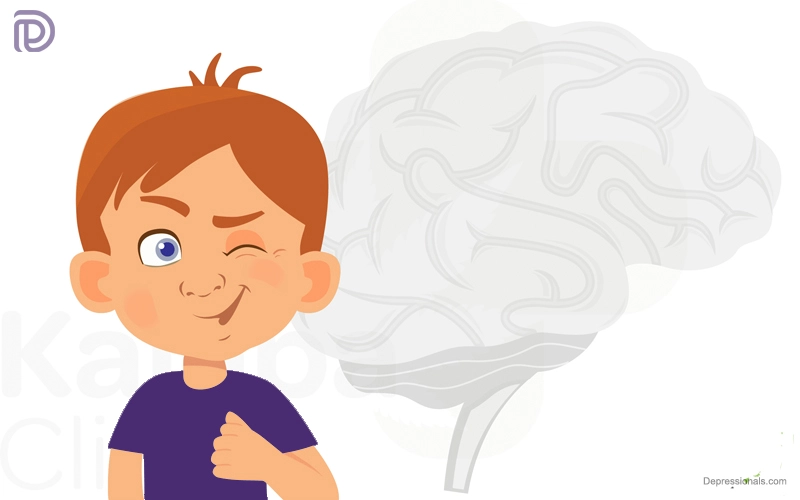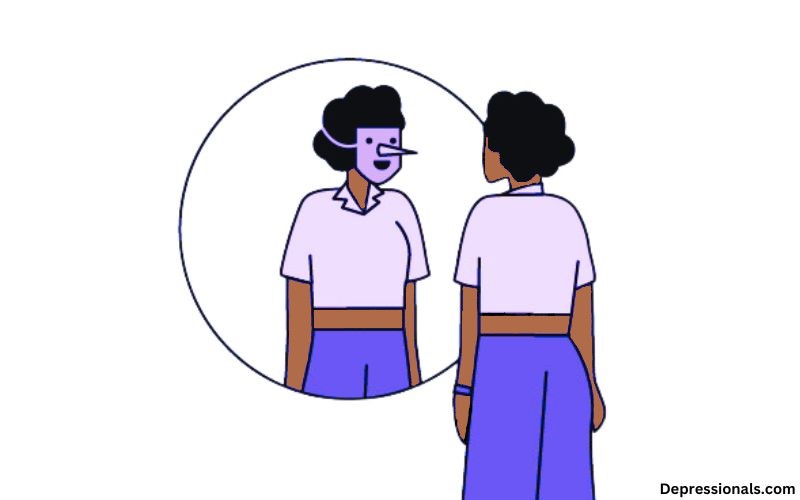The avoidant attachment style is developed during early childhood. When a child doesn’t receive sensitive responses to his or her needs, the behavior tends to develop. Avoidant attachment styles can make children very independent, both emotionally and physically.
Attachment styles characterize the manner in which a person responds to relationships and bonds. John Bowlby and Mary Ainsworth developed attachment theory, which includes attachment styles.
Avoidant attachment styles as children can make it difficult for an adult to form close relationships.
The article explains the causes and treatment options for avoidant attachment.
Read: Disorganized Attachment Style
What is avoidant attachment style?
Children and babies who are emotionally unavailable to their parents or caregivers are likely to form avoidant attachments.
It’s a deep need that newborns and children have to be close to their caregivers. But they are capable of learning to control their emotional displays. Children who learn that expressing themselves will result in rejection from their parents or caregivers adapt to this.
Children with avoidant attachment stop expressing emotion or seeking closeness when their inner needs are not met.
What causes avoidant attachment?
It is not uncommon for parents to close themselves off emotionally when they are confronted with a child’s emotional needs.
Parents sometimes don’t respond to their child’s emotional demands. When a child seeks affection or comfort, the parent distances themselves from them.
It is common for these parents to be particularly harsh or neglectful in times of greater need, such as when their child is sick, scared or injured.
The parents of children who cultivate an avoidant attachment may openly discourage their children from showing their emotions, such as crying during times of sadness and joyfully cheering during times of celebration.
Additionally, they think that even very young children can be emotionally and practically independent.
An avoidant attachment might be induced in babies and children by parents or caregivers who:
- Don’t acknowledge their children’s cries or other signs of fear or distress
- Attempts to suppress their child’s emotional expression by telling them to stop crying, grow up, or become tough
- Shows signs of fear or distress by becoming angry or physically separating from the child
- Makes a child feel ashamed for expressing emotions
- Expects their child to be independent emotionally and practically
Related: Anxious Attachment Style
Avoidant attachment style traits
Children with an avoidant attachment style may be unable to display any outward signs of love or affection. Even though the child has a secure attachment, he or she will feel stress and anxiety in stressful situations.
Moreover, these children may not want to interact with their primary caregiver even though they are nearby. Physical contact may also be avoided by these children.
The attachment styles of such children might persist into adulthood. When one has an avoidant attachment style as an adult, they may experience the following:
- Avoidance of emotional intimacy
- When they want to get closer to their partners, they think their partners are being clingy
- Refraining from communicating with their partners and coping alone with difficult situations
- Suppressing their emotions
- Sulking or hinting at what is wrong rather than complaining
- Trying to forget negative experiences
- Ignoring unpleasant memories
- Being afraid of rejection
- Being independent
- Being highly self-esteemed while holding a negative view of others
- Preoccupied with their own comforts and needs
Older adults may also suffer from avoidant attachment. Hong Kong researchers measured the effects of male partners with avoidant attachment styles on their well-being in older marriages compared with female partners.
Related: Preoccupied Attachment Style
Is it possible to prevent avoidant attachment?
It’s important to understand how you’re meeting your child’s needs to ensure you develop a secure attachment. Take note of the messages you send around how they should express themselves.
The first thing you can do to help is to ensure they have access to all their basic needs, such as shelter, food, and closeness, with warmth and love.
Let them sleep in your arms while you sing to them. Gently change their diaper while talking to them.
Hold them while they cry. If they spill or break something, don’t shame them for it.
What is the treatment avoidant attachment?
Developing positive parenting patterns is possible with the assistance of a therapist if you’re worried about how to foster this type of secure attachment.
In most cases, experts agree that the avoidant attachment that parents pass to their children comes from the one they had with their own parents or caretakers while they were children.
While it can be challenging to break intergenerational patterns, it is possible with the right support and hard work.
Parents with attachment issues often work with attachment-focused therapists one-on-one. These therapists can help:
- Understand their own childhood
- Communicate their emotional needs
- Develop stronger connections with others
Parent and child will often be treated together by attachment therapists.
Therapy can help you create a plan that meets your child’s needs in a warm manner. Therapy can help you navigate the complexities and joys of parenting. It can help you embrace a new parenting style.
Read: Secure Attachment Style
Preventing avoidant attachment
Parents can help their children develop secure attachments instead of avoidant attachments by:
- Your emotions are in check and presenting them in a positive way to your children. Be honest about your emotions, as long as you don’t hurt yourself or anyone else.
- It is important to get enough sleep. Being a parent has its challenges, but lacking sleep can put you at risk of becoming irritable and less able to handle your emotions. Spend time with your spouse, friends, and family so that you can rest.
- What your baby does in different situations, including the sounds and facial expressions he/she makes. Changing your baby’s crying behavior based on hunger or tiredness will make a difference in their crying.
- Get to know your baby better by spending time with him or her. Show them that you care and want to spend time with them by talking to them, playing peek-a-boo, smiling at them, and touching them.
Trying to be the perfect parent will not make you happy. The attachment style of your child will not be determined by a single interaction. You will begin building healthy attachment patterns if you strive to connect with your child and are available when they need you.
Takeaway
Parents can give their children the gift of secure attachment by providing it to them.
A child’s secure attachment can be developed through diligence, hard work and warmth.
Additionally, it is important to keep in mind that no one interaction can determine a child’s attachment style entirely.
Usually, you will meet your child’s needs with warmth and love, but if you have to take a breather, attend to another child, or take care of yourself in some other way, you are free to let them cry in their crib for a few minutes.
The solid foundation you’re building every day won’t be undermined by a few moments here or there.






It is in point of fact a nice and helpful piece of information. I?m happy that you simply shared this helpful info with us. Please keep us informed like this. Thank you for sharing.
Thanks for the help
I really appreciate your help
Thank you for your articles. They are very helpful to me. May I ask you a question?
The articles you write help me a lot and I like the topic
Thanks a lot for sharing this with all of us you really know what you’re talking about! Bookmarked. Please also visit my site =). We could have a link exchange agreement between us!
You can certainly see your enthusiasm within the paintings you write. The sector hopes for even more passionate writers like you who aren’t afraid to say how they believe. Always go after your heart.
Thank you for writing such a great article. It helped me a lot and I love the subject.
It’s appropriate time to make a few plans for the future and it is time to be happy. I’ve read this submit and if I may just I want to recommend you some fascinating issues or suggestions. Perhaps you can write subsequent articles regarding this article. I desire to read even more things about it!
Hello, Neat post. There’s an issue along with your web site in web explorer, might check this? IE still is the marketplace chief and a large element of folks will leave out your excellent writing due to this problem.
You should write more articles like this, you really helped me and I love the subject.
I constantly spent my half an hour to read this web site’s posts every day along with a mug of coffee.
I do not even know the way I ended up here, but I thought this submit
was great. I don’t know who you are but certainly you are going to a well-known blogger should you aren’t already.
Cheers!
Hello Dear, are you truly visiting this web site daily, if so after that
you will definitely obtain nice experience.
Coming from my observation, shopping for technology online can for sure be expensive, yet there are some tricks and tips that you can use to help you get the best things. There are constantly ways to uncover discount specials that could help make one to come across the best electronics products at the cheapest prices. Great blog post.
Your articles are extremely helpful to me. May I ask for more information?
Thank you for posting this. I really enjoyed reading it, especially because it addressed my question. It helped me a lot and I hope it will help others too.
It was really helpful to read an article like this one, because it helped me learn about the topic.
What are your articles about? Please tell me more.
Thank you for sharing this article with me. It helped me a lot and I love it.
Thank you for writing this article. I appreciate the subject too.
It would be nice to know more about that. Your articles have always been helpful to me. Thank you!
Thank you for your help. I must say you’ve been really helpful to me.
Thank you for being of assistance to me. I really loved this article.
Dude these articles are great. They helped me a lot.
There is no doubt that your post was a big help to me. I really enjoyed reading it.
Thanks for the help
I really enjoyed reading your post, especially because it addressed my issue. It helped me a lot and I hope it can help others too.
You’ve been terrific to me. Thank you!
You helped me a lot by posting this article and I love what I’m learning.
I’ve to say you’ve been really helpful to me. Thank you!
Thank you for the sensible critique. Me and my neighbor were just preparing to do a little research about this. We got a grab a book from our local library but I think I learned more clear from this post. I’m very glad to see such great information being shared freely out there.
Appreciate it for helping out, excellent info .
I really appreciate this post. I’ve been looking everywhere for this! Thank goodness I found it on Bing. You’ve made my day! Thanks again!
Have you ever considered about including a little bit more than just your articles? I mean, what you say is valuable and everything. But think of if you added some great graphics or videos to give your posts more, “pop”! Your content is excellent but with pics and videos, this website could undeniably be one of the best in its niche. Superb blog!